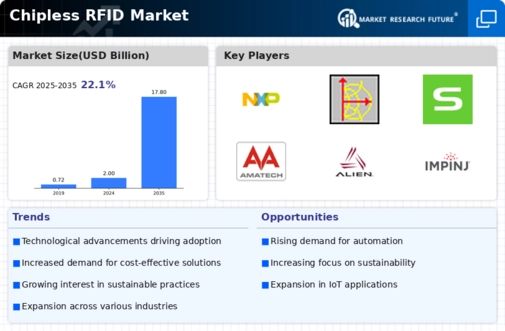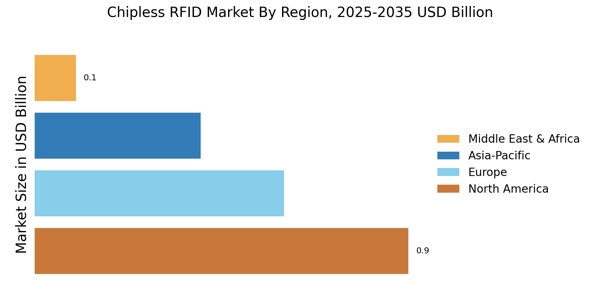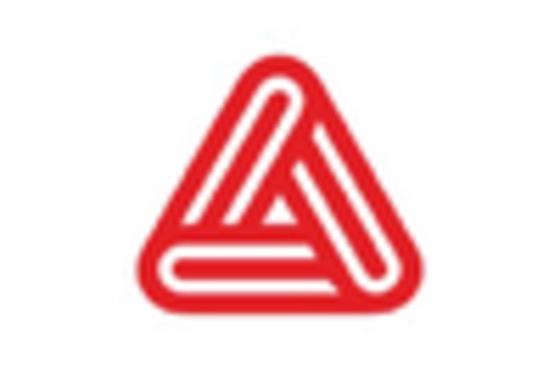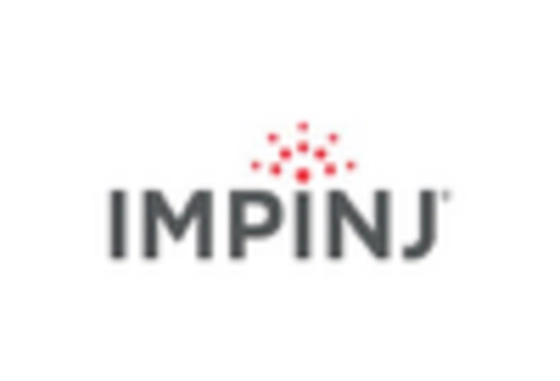Enhanced Data Management Capabilities
In the Chipless RFID Market, enhanced data management capabilities are emerging as a critical driver. The technology allows for the collection and analysis of vast amounts of data in real-time, which is invaluable for businesses aiming to improve decision-making processes. With the ability to track assets and inventory with precision, organizations can streamline operations and reduce waste. The integration of chipless RFID systems with advanced data analytics tools enables companies to gain insights into consumer behavior and operational efficiency. This trend is particularly evident in sectors such as healthcare and manufacturing, where data-driven strategies are essential for maintaining competitiveness. As the demand for sophisticated data management solutions continues to rise, the chipless RFID market is poised for substantial growth.
Regulatory Support and Standardization
Regulatory support and standardization are playing a pivotal role in the Chipless RFID Market. Governments and industry bodies are increasingly recognizing the potential of chipless RFID technology in enhancing supply chain transparency and security. Initiatives aimed at establishing standards for chipless RFID applications are likely to foster trust among stakeholders and encourage widespread adoption. For instance, regulations that mandate the use of RFID technology in certain sectors, such as pharmaceuticals and food safety, are expected to drive demand for chipless solutions. This regulatory landscape not only promotes innovation but also ensures that the technology meets safety and quality benchmarks. As a result, the chipless RFID market is likely to benefit from a more structured and supportive environment.
Cost Efficiency in Chipless RFID Market
The Chipless RFID Market is experiencing a notable shift towards cost efficiency, driven by the need for businesses to optimize operational expenses. Chipless RFID Market technology eliminates the need for expensive microchips, which can significantly reduce production costs. This cost-effectiveness is particularly appealing to sectors such as retail and logistics, where large-scale deployment is essential. As companies seek to enhance their supply chain management and inventory tracking, the affordability of chipless solutions becomes a compelling factor. Recent estimates suggest that the chipless RFID technology could reduce costs by up to 30% compared to traditional RFID systems. This financial incentive is likely to propel the adoption of chipless RFID solutions across various industries, thereby expanding the market further.
Growing Demand for Contactless Solutions
The Chipless RFID Market is witnessing a growing demand for contactless solutions, particularly in the wake of evolving consumer preferences. As businesses strive to enhance customer experiences, the convenience of contactless transactions is becoming increasingly important. Chipless RFID Market technology facilitates seamless interactions without the need for physical contact, making it an attractive option for retail, payment systems, and access control applications. The rise of e-commerce and the need for efficient logistics solutions further amplify this trend. Market data indicates that the contactless payment segment is expected to grow at a CAGR of over 20% in the coming years, which could significantly boost the chipless RFID market. This shift towards contactless solutions is likely to drive innovation and investment in chipless RFID technologies.
Integration with IoT and Smart Technologies
Integration with Internet of Things (IoT) and smart technologies is emerging as a key driver in the Chipless RFID Market. The convergence of chipless RFID with IoT enables enhanced connectivity and automation across various applications. This integration allows for real-time monitoring and management of assets, which is particularly beneficial in sectors such as logistics, healthcare, and manufacturing. The ability to connect chipless RFID systems with smart devices and platforms enhances operational efficiency and provides valuable insights into supply chain dynamics. As the IoT ecosystem continues to expand, the demand for chipless RFID solutions that can seamlessly integrate with these technologies is likely to increase. This trend suggests a promising future for the chipless RFID market, as businesses seek to leverage the benefits of interconnected systems.
















Leave a Comment